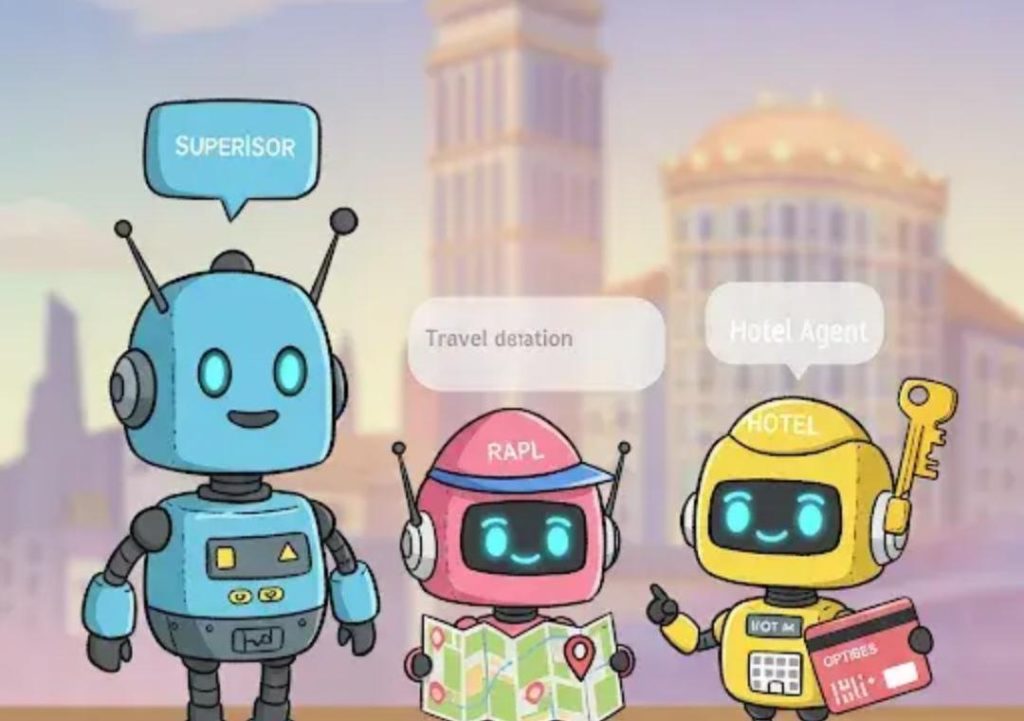
Multi-agent Collaboration Mimics Real Team Dynamics
In the world of artificial intelligence, the concept of multi-agent systems is gaining traction. Instead of relying on a single AI agent to perform a task, multiple agents can work together to achieve a common goal. This approach mimics the way humans work together in teams, leveraging each other’s strengths and compensating for weaknesses. In this blog post, we’ll explore the benefits of multi-agent collaboration, how it works, and why it’s becoming an essential tool in various industries.
The Limitations of Single-Agent AI
Single-agent AI systems are designed to perform a specific task, such as image recognition, natural language processing, or decision-making. While these systems have achieved impressive results, they are limited by their individual capabilities. For instance, an AI agent trained for image recognition may struggle with understanding the context and nuances of human language.
Moreover, single-agent AI systems can be brittle and prone to errors. If the agent is designed to perform a specific task, it may not be able to adapt to new situations or unexpected inputs. This rigidity can lead to poor performance, decreased accuracy, and even catastrophic failures.
The Power of Multi-Agent Collaboration
Multi-agent systems, on the other hand, offer a more flexible and robust approach. By deploying multiple agents, each with its unique strengths and capabilities, you can create a digital workflow that mirrors human teamwork. This modular setup allows agents to specialise, communicate, and collaborate across tasks, such as research, validation, and reporting.
In a multi-agent system, each agent can focus on its area of expertise, reducing the likelihood of errors and increasing the overall accuracy of the system. For example, an AI agent trained for image recognition can work alongside an agent trained for natural language processing to provide a more comprehensive understanding of the data.
How Multi-Agent Collaboration Works
So, how do multi-agent systems work together to achieve a common goal? Here’s a high-level overview:
- Agent Selection: The system selects the most suitable agents for a specific task, based on their skills and expertise.
- Task Allocation: The system assigns tasks to each agent, taking into account their strengths and weaknesses.
- Communication: Agents communicate with each other, sharing information and insights to achieve a common goal.
- Collaboration: Agents work together to complete the task, leveraging each other’s strengths and compensating for weaknesses.
- Result Integration: The system integrates the results from each agent, ensuring a comprehensive and accurate outcome.
Benefits of Multi-Agent Collaboration
The benefits of multi-agent collaboration are numerous:
- Increased Accuracy: By leveraging the strengths of multiple agents, you can achieve higher accuracy and better decision-making.
- Improved Flexibility: Multi-agent systems can adapt to new situations and unexpected inputs, reducing the risk of errors and failures.
- Enhanced Scalability: As the complexity of tasks increases, multi-agent systems can scale more easily, allowing you to tackle larger and more complex problems.
- Better Decision-Making: Multi-agent systems can provide more comprehensive and nuanced insights, enabling better decision-making and strategic planning.
Real-World Applications
Multi-agent collaboration is not limited to theoretical discussions; it’s being applied in various industries, including:
- Healthcare: Multi-agent systems are being used to analyze medical images, diagnose diseases, and develop personalized treatment plans.
- Finance: Multi-agent systems are being used to analyze market trends, predict stock prices, and optimize investment portfolios.
- Manufacturing: Multi-agent systems are being used to optimize production workflows, predict equipment failures, and improve supply chain management.
Conclusion
In conclusion, multi-agent collaboration is a powerful approach to AI development, allowing different agents to specialise, communicate, and collaborate across tasks. By mimicking human teamwork, multi-agent systems can create digital workflows that are faster, more accurate, and more scalable. As the complexity of tasks increases, multi-agent collaboration will become an essential tool in various industries, enabling organizations to achieve better outcomes and stay ahead of the competition.
News Source:



